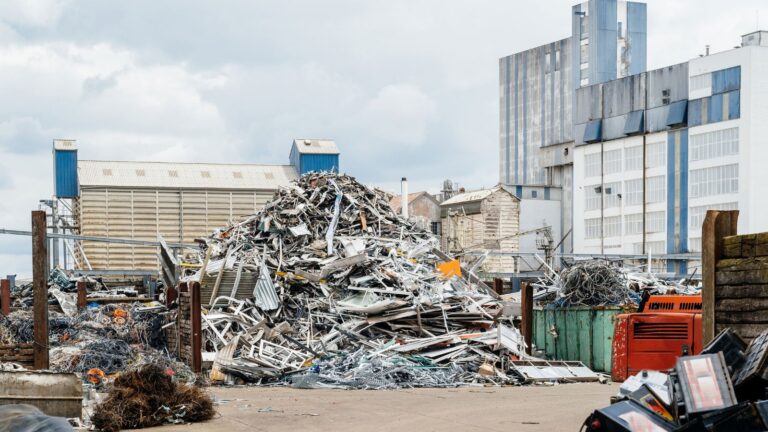How to prevent used cooking oil theft

In the past, cooking oil was simply waste that couldn’t be recycled, with most of it ending up in landfills or being improperly disposed of. However, now that it holds value, it has become a target for thieves. What was once waste is now a source of income. Used cooking oils (UCOs) are oils and fats that have been used a few times for cooking or frying. Restaurants, fast food chains, and even households join hands with recycling companies and place cooking oil for them to pick up. But many times instead of them it is picked by thieves.

You may wonder why used cooking oil is suddenly worth so much money. The answer lies in biodiesel production. Biodiesel, sometimes called “chip shop fuel,” is made from vegetable-based cooking oil through a process called transesterification, turning it into a sustainable alternative to diesel. Thieves and organized criminals target businesses like takeaways, pubs, and restaurants to steal used oil, which they sell to produce biofuels for vehicles or heating. Detective Aaron Woelkers of the Bensalem Police Department said (in an interview for mopac.com):
“The actors generally operate overnight and in the early morning hours. Many of the containers the restaurants use to store the used oil are unsecured or easily accessible with minimal effort from the actors. The actors will just pull up alongside the tanks/containers/access ports and pump out the used oil and take minimal efforts to hide their actions.”
One big case of used cooking oil theft occurred on the East Coast of the U.S., where 21 linked individuals stole about $3.4 million worth of used cooking oil, also known as “yellow grease. The 21 co-conspirators targeted restaurants across the East Coast, stealing the oil from containers and selling it to buyers in the biofuel industry.

Waste oil theft is also humorously depicted in The Simpsons. In episode 1 (S10), Homer and Bart start a grease business by cooking bacon after realizing they can make a profit. They later drive to Krusty Burger to steal grease from the fryers. After loading it into Marge’s car, two rival workers show up, claiming control over the city’s grease business. Finally, Homer and Bart try stealing from the school kitchen but are confronted by Groundskeeper Willie, who says the grease is his retirement plan.

In this 1998 episode, we see parallels to real life today, with themes of fake recycling companies and grease thieves. However, unlike in the episode, modern-day grease theft prevention benefits from advanced technology, which helps secure used cooking oil and prevent such actions.
So, let’s see how to prevent used cooking oil theft step by step:
1. Only ever use legitimate waste disposal companies

Ensure you’re working with a legitimate waste collection company by verifying their credentials. Be cautious of unverified collectors soliciting your business. Always check the ID of collection staff and confirm they are authorized before handing over your used oil.
2. Security measures
Oil Tank Security
Enhance the security of your used cooking oil storage with oil tank cap locks and alarms. When you have indoor storage, use pipe locks. These simple tools act as a first line of defense, making it harder for thieves to access the oil.

CCTV and Lighting
Install CCTV cameras alongside dusk-to-dawn security lighting. This not only helps to visually capture unauthorized activity but also deters potential thieves by increasing their chances of being seen.

Regular Fill Level Monitoring
Use smart technology to monitor the oil fill levels inside your bins and dumpsters. This technology allows you to measure fill levels without opening the bin, reducing theft opportunities. Software system by Sensoneo can provide you with instant notification alerts when unexpected events like drops in fill levels occur.

GPS Location Tracking
GPS-enabled functionality within the radar sensor by Sensoneo allows you to track the exact location of your used cooking oil dumpsters. If a bin is moved without authorization, real-time alerts enable a quick response, making it easier to retrieve stolen property and prevent further thefts.

Smart Waste Management Systems
IoT-enabled systems provide real-time monitoring of oil levels and data-driven insights. These systems can identify theft patterns or unusual behavior, giving you an opportunity to act proactively. Alerts can notify you immediately if an unauthorized removal or sudden drop in fill level occurs, while optimized collection routes ensure your containers are emptied regularly, minimizing idle time and reducing theft opportunities.

Sensoneo radar fill level monitoring sensor might help you achieve most of those measures including easy configuration via the Bluetooth app, allowing you to adjust measurement settings like frequency of measurements to suit your specific needs. The cloud-based Smart Waste Management System helps you monitor dumpster fill levels in real time, plan efficient collection routes, and optimize waste management operations. Additionally, complex Analytics by Power BI provides in-depth data for intelligent decision-making, helping you stay ahead of potential theft. The sensor’s durable, waterproof design ensures continuous and reliable performance.
Sources: securedbydesign.com, nbcc.police.uk, mopac.com
Latest waste library articles

Understanding the impact of industrial waste
Environment, Industrial Waste
How to recycle e-waste?
How to recycle?
How to choose the waste management solution for your business
Smart Waste Management
How might the Deposit Return Schemes look like in future?
Deposit Return System
Smart Waste Newsletter
Get monthly updates from our company and the world of waste!



















